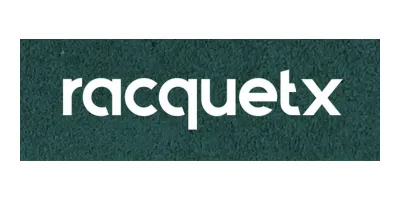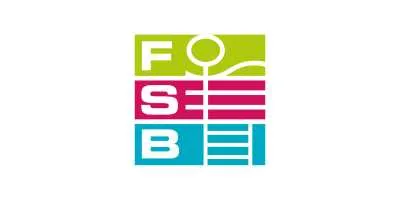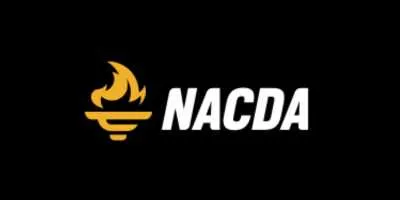Home » Sports Facility Grants & Funding » Grants for Youth Sports Facilities: Secure the Funding Needed for Your Project

Securing grants for youth sports facilities is crucial for developing or renovating these vital spaces, which can significantly benefit communities, educational institutions, and various organizations. Although obtaining the necessary funding can be challenging, numerous grants are available to support the creation and enhancement of youth sports facilities.
This article offers a comprehensive guide to these grants, specifically tailored for project planners from educational institutions, municipalities, commercial sports facilities, and nonprofits.
Get a Cost Estimate for Your Project
If you are planning to build or renovate a sports facility, obtaining a cost estimate early in the process is crucial for a successful grant application. Use one of our cost calculators to get started and ensure your project is on the right track.
Importance of Youth Sports Facilities
Youth sports facilities play a crucial role in community development and youth engagement. They provide safe and structured environments where young people can engage in physical activities, fostering their physical and mental health. These facilities help in promoting teamwork, discipline, and social skills among youth, contributing to their overall development. Additionally, well-maintained sports facilities can serve as community hubs, encouraging social cohesion and providing a space for community events and activities.
Types of Youth Sports Facilities Eligible for Grants and Funding
Youth sports facilities come in various forms, each catering to different needs and communities. Understanding the specific type of facility you plan to develop or renovate will help in identifying the most suitable grants. Here are some common types of youth sports facilities that are typically eligible for grants and funding:
Community Sports Centers
These multipurpose facilities offer a variety of sports and recreational activities, providing a central hub for youth engagement. They often include basketball courts, fitness areas, and spaces for community events, making them eligible for a wide range of grants focused on community development and physical fitness.
School Gymnasiums and Athletic Fields
These facilities, located within educational institutions, support physical education and extracurricular sports programs.
Grants for educational infrastructure, health and wellness initiatives, and sports development frequently target school gymnasiums and athletic fields, enhancing the overall educational environment.
Public Parks with Sports Amenities
Public parks equipped with sports amenities such as basketball courts, soccer fields, and tennis courts are vital for community recreation.
Grants from local governments, environmental organizations, and recreational foundations often support the development and improvement of these facilities to promote outdoor activities and community health.
Specialized Facilities
Dedicated spaces for specific sports, such as swimming pools, skate parks, and indoor climbing gyms, cater to specialized interests and skills.
Grants for specialized sports programs, youth engagement initiatives, and health and wellness projects can help fund these facilities, ensuring they meet the needs of targeted youth populations.

Categories of Grants for Youth Sports Facilities
Grants for youth sports facilities can be broadly categorized into government grants, private foundation grants, corporate sponsorships and grants, and specialized sports grants.
1. Government Grants
Government grants are often provided at federal, state, and local levels to support community projects, including youth sports facilities.
- Federal Grants: Programs like the Land and Water Conservation Fund (LWCF) and the Community Development Block Grant (CDBG) Program offer substantial funding for the development and renovation of recreational facilities.
- State and Local Grants: Many states and municipalities have specific grant programs aimed at supporting local community projects. These grants can vary widely in terms of eligibility and funding amounts. Check out our sports facility grants database for relevant programs.
2. Private Foundation Grants
Private foundations are significant sources of funding for community projects, including youth sports facilities. These organizations typically focus on specific causes and provide grants to align with their missions.
- Robert Wood Johnson Foundation: Known for supporting health and wellness initiatives, this foundation offers grants that can be used for developing sports facilities.
- Ford Foundation: Provides funding for various community development projects, including sports and recreation facilities.
3. Corporate Sponsorships and Grants
Corporations often have community outreach programs that include grants and sponsorships for local projects.
- Nike Community Impact Fund: Offers grants to organizations that promote physical activity and sports among youth.
- Gatorade Player of the Year Grants: Provides funding to support sports programs and facilities in communities across the country.

4. Specialized Sports Grants
Certain organizations and foundations focus specifically on supporting sports facilities and programs.
U.S. Soccer Foundation Safe Places to Play
- Grants for developing soccer fields and facilities in underserved communities to ensure safe play spaces for children.
- Eligibility: Schools, municipalities, and nonprofit organizations.
- More Information: U.S. Soccer Foundation Safe Places to Play
MLB Youth Development Foundation
- Grants to support the development of baseball and softball facilities and programs, with a focus on increasing youth participation, especially in underserved areas.
- Eligibility: Schools, municipalities, and nonprofit organizations.
- More Information: MLB Youth Development Foundation
NFL Foundation Grassroots Program
- Grants for developing football fields in underserved communities, ensuring access to quality sports facilities for young people.
- Eligibility: Nonprofit community organizations, schools, and local government agencies.
- More Information: NFL Foundation Grassroots Program
USTA Facility Assistance Program
- Grants and technical assistance for constructing and renovating tennis facilities, with an emphasis on community-based projects.
- Eligibility: Schools, municipalities, and nonprofit organizations.
- More Information: USTA Facility Assistance Program
How to Find and Apply for Grants
Finding the right grants involves thorough research. Utilize online databases and grant directories to identify potential funding sources. Networking with other organizations, community leaders, and industry professionals can also help uncover grant opportunities.
Check out our sports facility grants & funding section for relevant funding opportunities.
Preparing a Strong Grant Application
A successful grant application requires careful preparation and attention to detail. Here are some key steps to follow:
- Understand the Grant Requirements: Each grant will have specific eligibility criteria and application requirements. Make sure you thoroughly understand these before applying.
- Gather Necessary Documentation: This may include project plans, budgets, community support letters, and other relevant documents.
- Write a Compelling Proposal: Clearly articulate the need for the project, the benefits it will provide, and how it aligns with the grant’s objectives. Highlight the community need and the potential impact of the facility.
- Include Detailed Project Plans and Budgets: Provide a comprehensive overview of the project, including timelines, costs, and funding sources.

Importance of Cost Estimation
Accurate cost estimation is crucial for any grant application. It helps demonstrate the financial feasibility of the project and ensures that you request an appropriate amount of funding. Detailed cost estimates strengthen your application by showing that the project is well-planned and financially sound. Components of a comprehensive cost estimate include:
- Construction Costs: Materials, labor, permits, and fees.
- Equipment and Furnishings: Sports equipment, seating, lighting, and other necessary items.
- Operational and Maintenance Expenses: Ongoing costs associated with running and maintaining the facility.
- Contingency Funds: Extra funds to cover unexpected costs.
Get started quickly and easily by using one of our sports facility cost calculators.
Role of Professional Sports Facility Builders
Engaging professional sports facility builders can significantly enhance your project’s success. These professionals bring expertise in designing and constructing sports facilities, ensuring that the project meets all technical and regulatory requirements. They can assist with:
- Design and Planning: Creating detailed plans and specifications.
- Cost Estimation: Providing accurate and comprehensive cost estimates.
- Grant Application Support: Helping with the preparation of technical documents and compliance with grant requirements.
Working with experienced builders can increase the likelihood of securing funding and ensure the project is completed to a high standard.
Conclusion
Securing grants for youth sports facilities is essential for developing and enhancing community infrastructure. By understanding the different types of grants available, preparing strong applications, and engaging professional builders, project planners can successfully navigate the funding landscape. Take advantage of the resources and opportunities available to create or renovate facilities that will benefit your community for years to come.
Be sure to visit our Sports Facility Grants & Funding section for additional funding opportunities for your sports facility development project!











